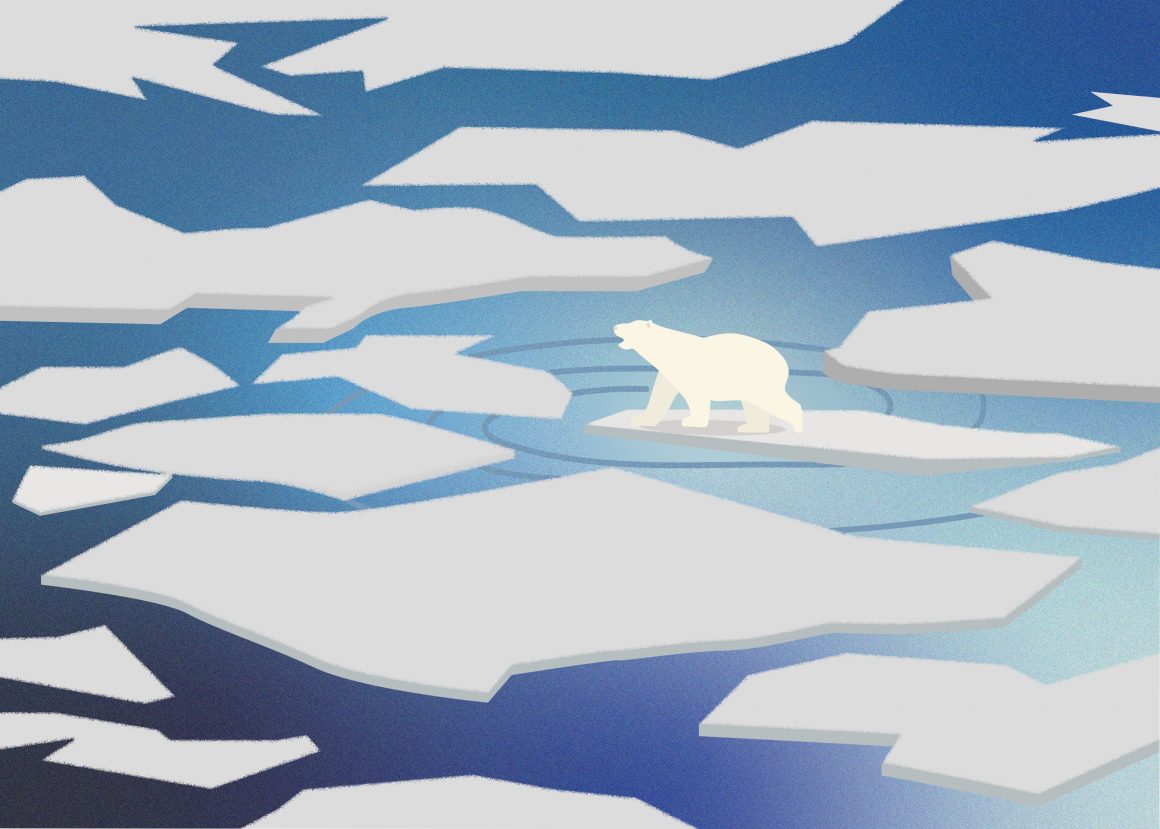
What’s lurking beneath the ice?
By Leonie O’Sullivan, April 17 2024—
A well-known significant concern brought on by climate change is the melting of ice caps. By now, most of us have seen an image of a polar bear grappling with the loss of Arctic ice. Sea-level rise is a serious consequence, which is also largely driven by the thermal expansion of water. Beyond the clear threats of biodiversity loss and sea-level rise, many more effects are waiting beneath the ice.
“If you think about a bathtub of warm water, that water is more expansive than cold water, which is more dense,” James Burgmann, an expert in climate change communication, told the Gauntlet. “The actual expansion of the ocean itself as it warms, drives most of the sea level rise.”
Apart from the rise in sea levels, escalating temperatures will trigger the release of significant amounts of trapped methane gas, which is 30 times stronger than carbon dioxide at trapping heat. The release of methane from melting permafrost, a frozen layer of soil, gravel, sand and ice, could exacerbate climate change effects.
“We have this unquantifiable amount of greenhouse gas emissions that we might be stumbling upon when the caps melt,” said Burgmann.
In a vicious cycle, anthropogenic-driven temperature increases could trigger the release of large quantities of methane, further exacerbating temperature rise. However, the consequences of rising temperatures and melting ice do not stop here.
Burgmann added, “We also have biological diseases locked away in there. Viruses that we haven’t seen for millennia. We have all these ancient viruses preserved in ice that if we suddenly got exposed to, we have no immunological history of exposure.”
In 2023, research published in PLOS Computational Biology underscored that pathogens preserved in ice present “unpredictable threats so far confined to science fiction and conjecture could be powerful drivers of ecological change.”
While this study focused on the effects on microbial communities, humans are not impervious to old viruses. In the past decade, permafrost thaw in Siberia, Russia, triggered an Anthrax outbreak. This crisis led to the deaths of over 2000 reindeer, hospitalized 90 local individuals, and claimed the life of one child. A few years before this outbreak, researchers sounded alarms, advocating for permafrost monitoring in regions with a history of anthrax outbreaks.
Anthrax is not the only virus we need to worry about. Dormant viruses called “zombie viruses” can remain viable in ice for tens of thousands of years.
“The scenario of an unknown virus once infecting a Neanderthal coming back at us, although unlikely, has become a real possibility,” geneticist Jean-Michel Claverie of Aix-Marseille University told the Guardian.
Claverie led a 2023 study that discovered thirteen distinct infectious virus strains from seven Siberian permafrost samples. Remarkably, one of these viruses is estimated to be more than 48,500 years old. These findings raise concerns about the potential public health risks posed by these so-called “zombie viruses.”
An earlier study also discovered microbes and viruses dating back 14,400 years preserved in glacier ice from the Tibetan Plateau in China.
So, why aren’t global leaders taking more action on climate change? We all know the reality of living in a pandemic. If the urgency of saving polar bears, retaining biodiversity and mitigating rising sea levels isn’t compelling enough, perhaps the prospect of dealing with a new “zombie virus” pandemic will prompt greater consideration of the climate crisis.
